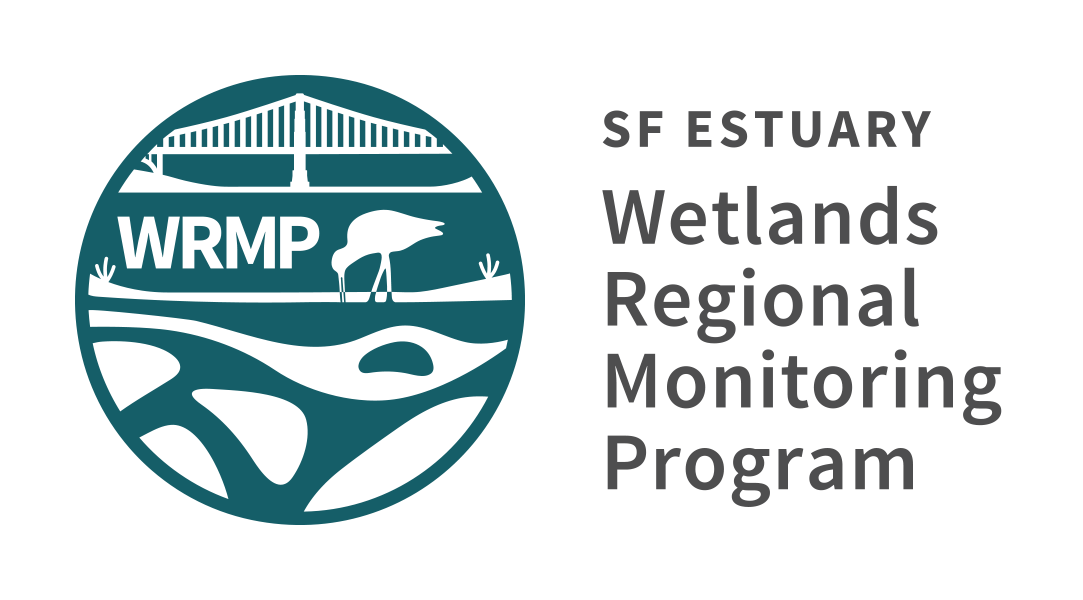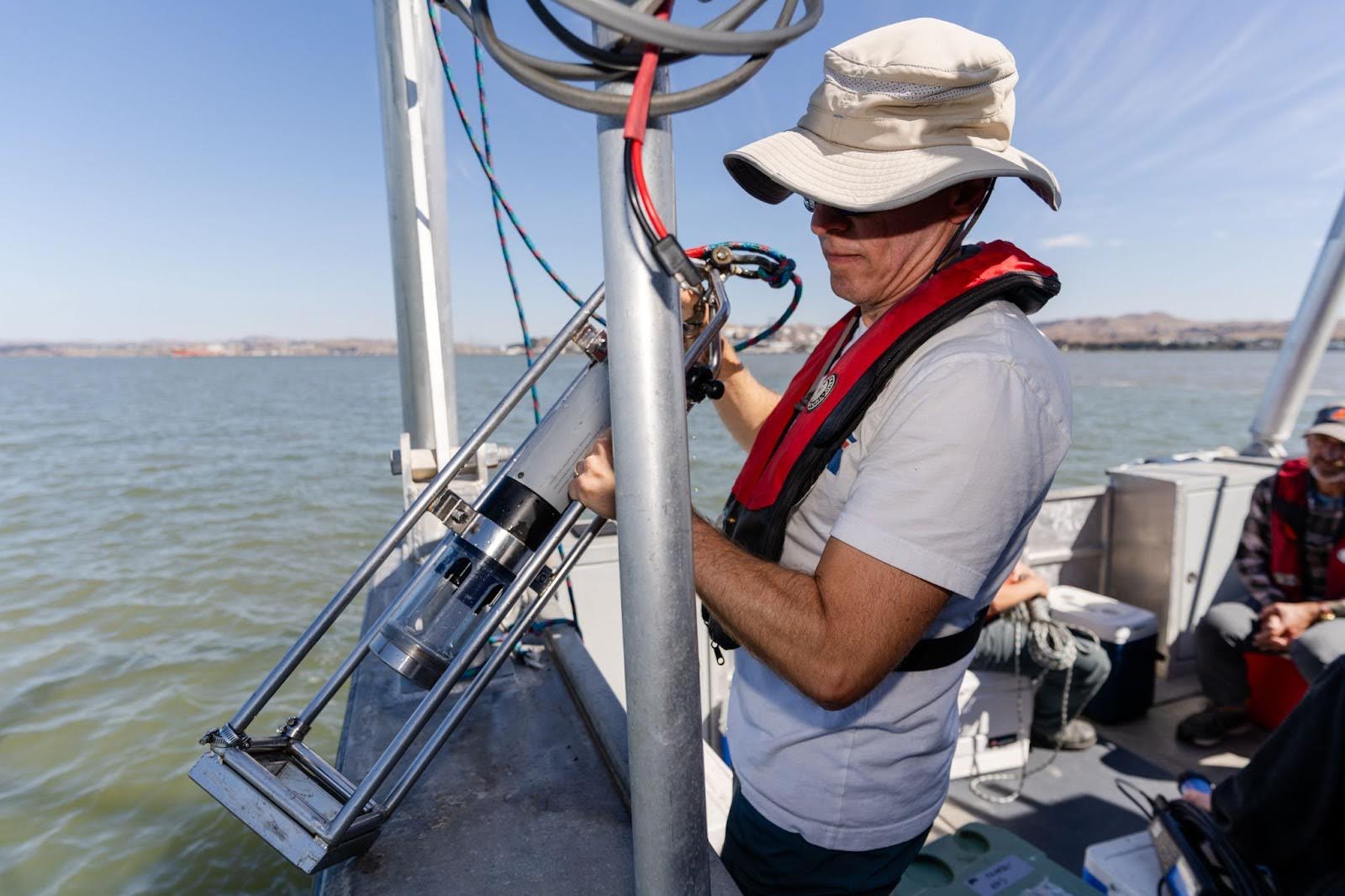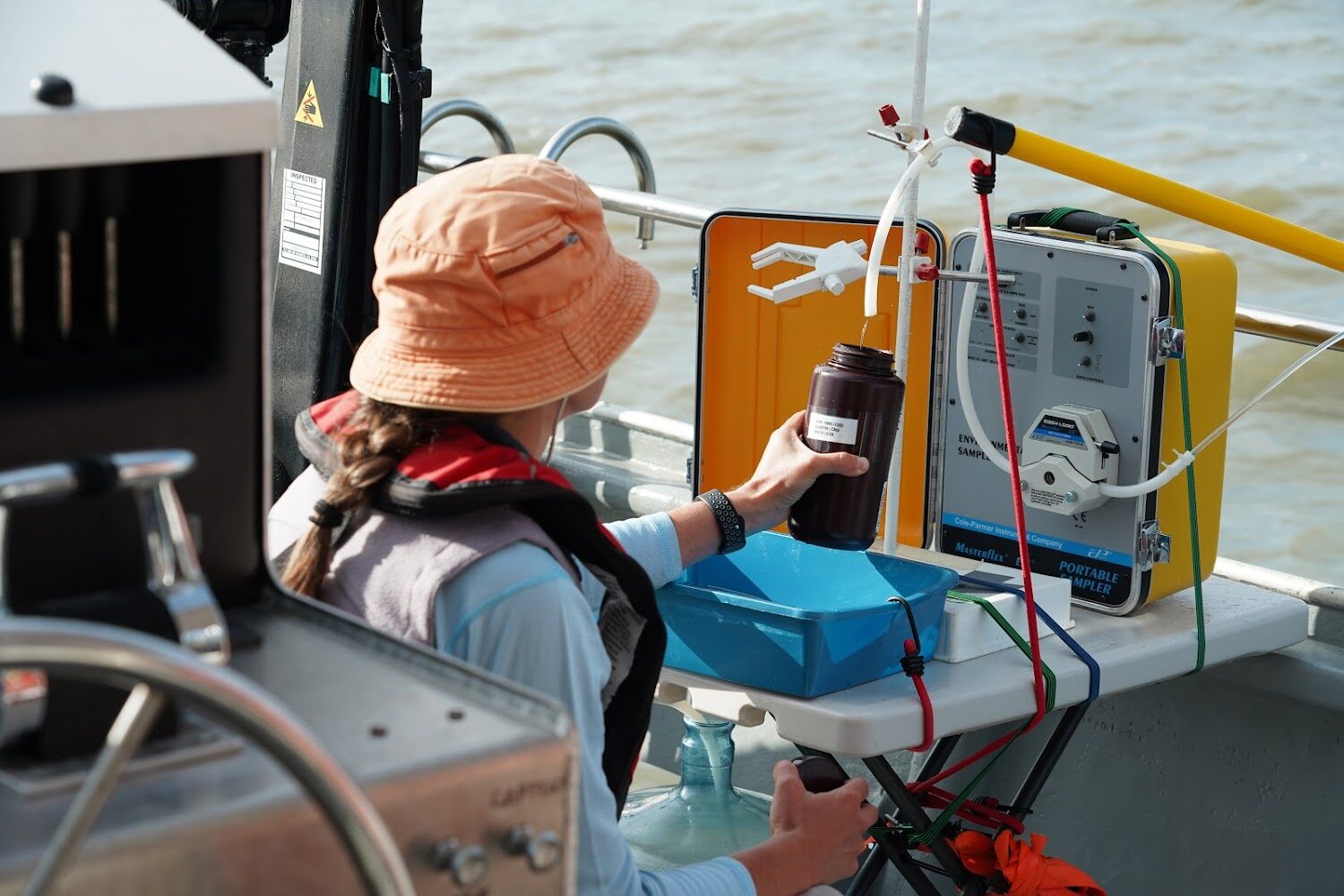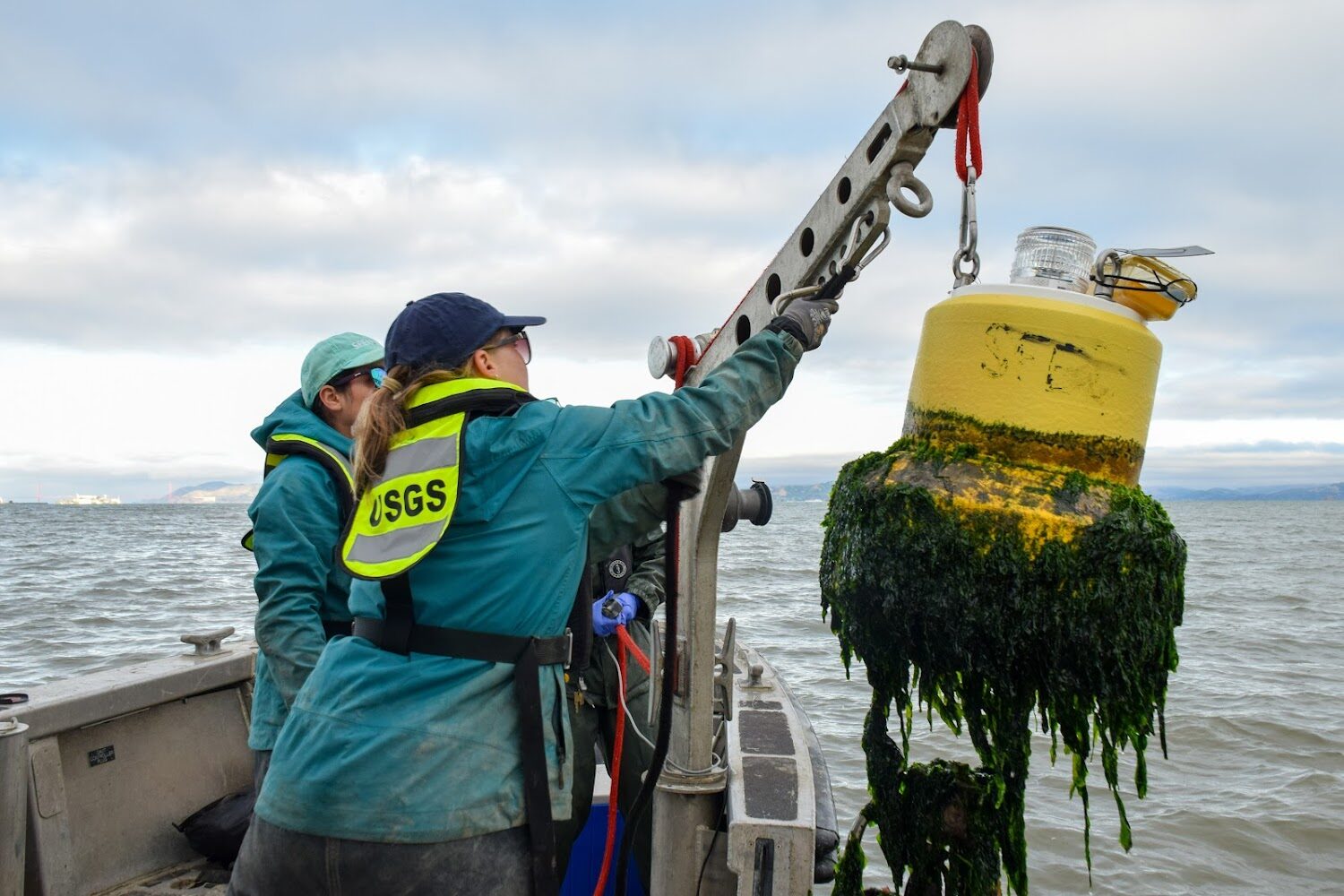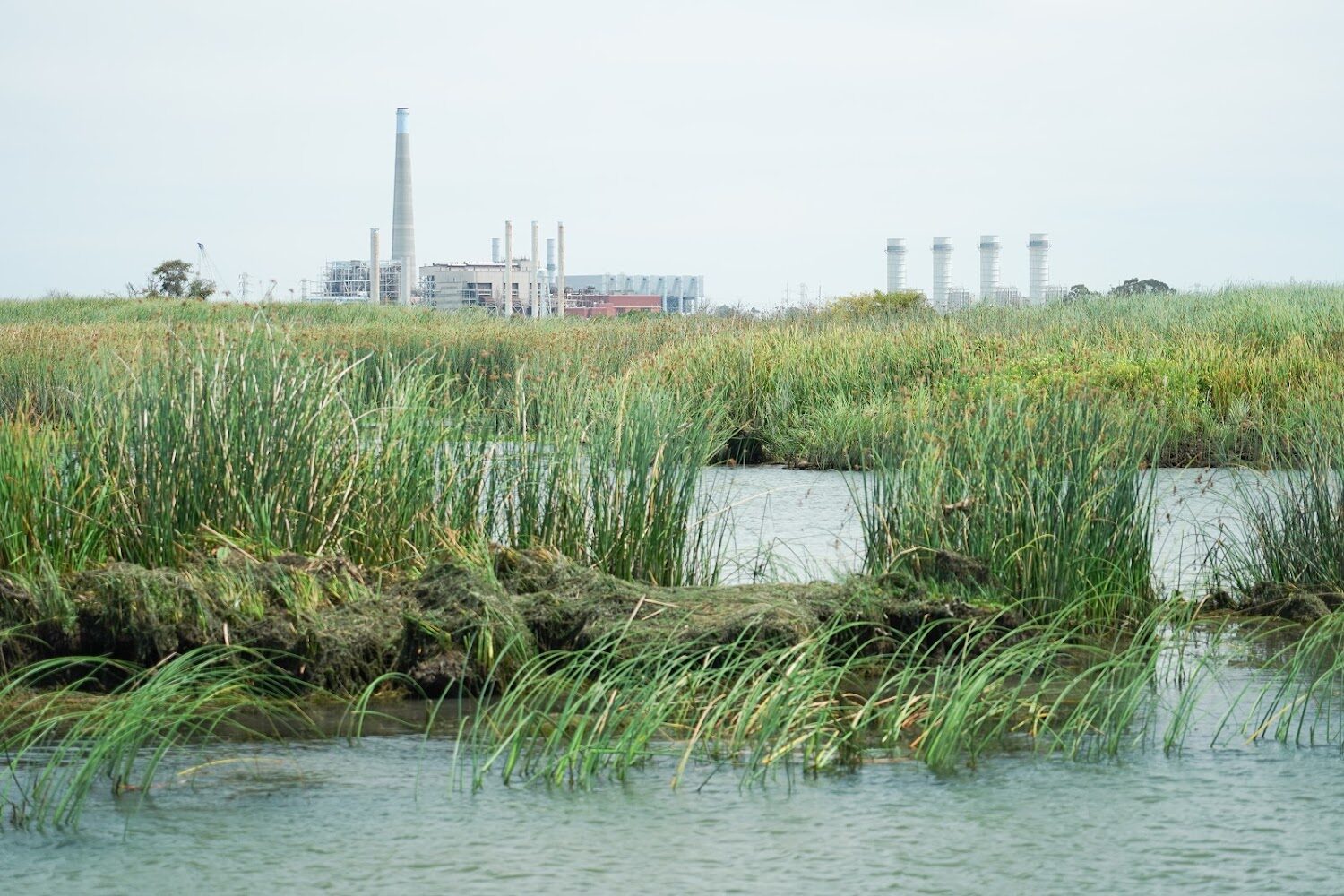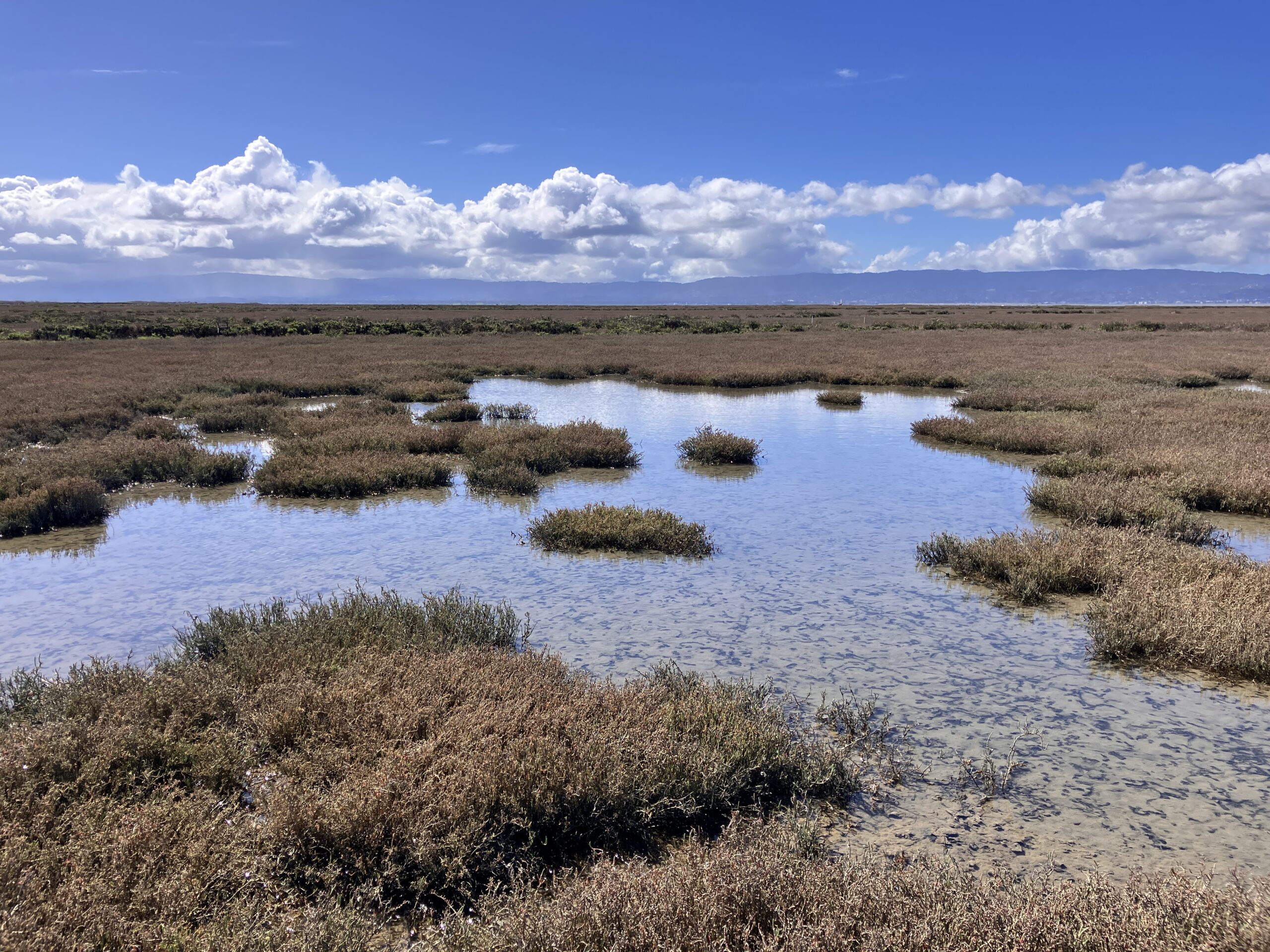Monitoring Results
Water quality affects plants, fish, and wildlife health and distribution, and also how much wetlands can gain elevation with sea-level rise. The WRMP monitors water quality, such as nutrients, salinity, suspended sediment, and oxygen, to better understand how they interact and influence the biological aspects of tidal wetlands.
Water quality describes the chemical, biological, and physical characteristics of water that influence tidal wetland ecosystems. The characteristics include water temperature, dissolved oxygen, salinity, nutrients, suspended sediment, and pollutants, among others.
Estuaries are characterized by the mixing of fresh and saltwater and this determines where the plants, fish and wildlife are found in the wetlands. The amount of suspended sediment coming from upland sources and landing on the wetland influences a wetland’s ability to keep pace with rising waters and is integral to understanding how restoration sites can gain elevation to become vegetated. Water temperature, nutrients, and oxygen are important for aquatic species’ distribution and health.
Challenge & Response
Water quality influences every aspect of tidal wetlands, from the type of plants and wildlife that can exist to how fast wetland elevations can change. Poor water quality can lead to lack of habitat for important species, and wetlands failing to accrete enough sediment to keep pace with sea-level rise. The WRMP is monitoring water quality in several ways; however, monitoring crucial quality metrics effectively, over time and at scale poses several challenges. It is often more challenging to sample water quality next to tidal wetlands than in the middle of the Bay because shallow water, mudflats, and equipment is often exposed at low tides. The WRMP aims to expand the network of near-wetland monitoring to better understand how conditions are changing throughout the region. This information can pinpoint areas where wetland restoration and management are succeeding and areas where technical, regulatory, or societal solutions are needed to ensure clean water.
Science Framework
Monitoring water quality is an important component of the WRMP Science Framework, helping to understand the influence of water quality on tidal wetlands, and vice versa.
- Are changes in tidal marsh ecosystems impacting water quality?, What are the regional differences in the sources and amounts of sediment available to support accretion in tidal marsh ecosystems?
Key Metrics & Figures
The WRMP has developed metrics to track how wetland restoration projects are influencing water quality at individual sites and the Estuary, including surface water salinity, porewater salinity (salinity of water in soils), dissolved oxygen (key for aquatic animals), and suspended sediment (important for understanding how marshes persist over time).
Looking for local data and information?
Metrics describe how the WRMP conducts science to better understand and monitor the Estuary’s tidal wetlands, like water quality, fish habitat, wetland condition, and benefits to humans. Explore all the WRMP’s metrics, which aim to guide wetland management and restoration.
How We Monitor
Water quality monitoring is an important component of WRMP monitoring, and is being conducted concurrently with vegetation monitoring, sediment monitoring, and fish surveys.
1
- Measure if water quality is suitable for fish, wildlife, and vegetation.
- Track changes in water quality over time and differences across the Estuary.
- Understand how sediment concentrations are changing to aid in restoration planning.
2
- Salinity, suspended sediment concentration and turbidity, temperature, pH, dissolved oxygen, and nutrients.
- Some data are collected using single samples while others are collected using continuous data loggers.
3
- Within tidal channels in older wetlands and where restoration is occurring.
- In the middle of the Bay.
- Where fish sampling is occurring.
Because water quality is such an important aspect of tidal wetland ecosystems, multiple WRMP science teams are monitoring it. The WRMP is collecting water quality data concurrently in the following ways:
- As part of the WRMP Vegetation Monitoring, Dr. Chris Janousek with Oregon State University is measuring soil porewater salinity and has installed a number of piezometers to measure groundwater level over time at a subset of vegetation transects.
- The San Francisco Bay National Estuarine Research Reserve is measuring pressure/depth, conductivity/temperature, dissolved oxygen, pH, and turbidity at their WRMP monitoring locations.
- Dr. Levi Lewis with UC Davis is collecting water quality data (e.g., temperature, salinity, dissolved oxygen, water clarity) as part of the Fish and Fish Habitat monitoring. This will enable comparison of water quality data to other baseline data about fish.
